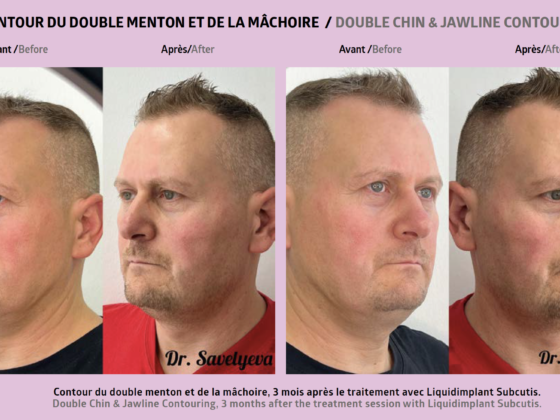By Doctor Nikolay Boiko
The presence of a large genital organ was of considerable importance in terms of evolution because women subconsciously chose individuals with a large penis, which guaranteed the birth and survival of healthy and attractive progeniture.
The primary aim of intimate male surgery is to improve the genital aesthetic. The term “body dysmorphic disorder” or “dysmorphophobia” refers to a person’s dissatisfaction with certain parts of their body, and not just their sex organs: it might be their skin, the shape or size of their nose, their chest, etc. Yet these parts of their body might look and work exactly as they should. In the international classification of diseases (ICD-10), body dysmorphic disorder is a “Mental and behavioural disorder” (F45). Illness anxiety disorder (F45.2) includes mild body dysmorphic disorder. In the last few years, the term “penile dysmorphophobia” has been used in andrology to refer to a man’s excessive concern about the size and/or shape of his completely-normal penis. For men suffering from psychological body dysmorphic disorder, the size of their penis when flaccid is much more important than the size of their penis when erect.
In the United States alone, of the 10,000 men who underwent a penis augmentation between 1991 and 1998, the majority were mainly worried about the size of their penis when it was flaccid. In other words, they were suffering from “locker-room syndrome”.
This sometimes unfounded desire that men have to have “large sex organs” leads them to seek out and use augmentation methods that are often pseudo-scientific and non-medical (injection of Vaseline, insertion of plastic particles, little metal balls, insoluble liquids or substances in non-sterile conditions). These interventions often cause inflammation, the loss of important tissues, deformation of the organ, and even a loss of erectile function. Most often, surgery is the only way to resolve these problems.
There are two types of indication for penile surgery:
Functional indications: epispadias, hypospadias, Peyronie’s disease, fibrosis in the corpora cavernosa, traumatism, micropenis.
Aesthetic indications: old man’s penis, buried penis, hidden penis, penile dysmorphophobia.

Does intimate surgery improve the quality of their sexual relations ? Yes, of course, but mainly because it boosts the man’s self-confidence.
Do women notice this change? Intimate male surgery leads to a significant increase in the genital organs’ size, so their partner will feel the difference and find the man even more attractive.
Furthermore, it has been proven that vaginal orgasm depends on the woman’s focus on their vaginal sensations, the duration of intercourse and the size of the penis (BrodyS, WeissP. JSexMed. 2009).
What is more, in 20 to 30% of cases, the length and, above all, the girth of the penis are important, even key, for women. Sometimes, the size of the penis is important not just during intercourse but also because of the psychological pleasure it triggers when a woman looks at it.
The correction methods can be split into invasive, namely surgical, and non-invasive, including aesthetic devices, and they are offered in somatic and psychiatric (psychological) medical units, respectively.
Currently, there are no effective medicine-based treatments that can increase the size of the penis.
The psychological method involves convincing the patient to be happy with the size and shape of their penis as it is, instead of making it bigger (“size doesn’t matter”, as we say). The stretching method involves using special devices such as the penis extender or penis pump.
Intimate masculine surgery includes various modern, invasive techniques. With regard to lengthening, the following surgical techniques exist:
- Ligamentotomy, superficial surgery
- Nesbit operation by plication
- Corporotomy
- Spongiolysis
- Perlmutter-Chamberlain procedure
- Penile prosthesis
- Mobilisation and fixing
Ligamentotomy is the most common operation. It involves sectioning the penis’ suspensory ligament. By pulling the corpora cavernosa outwards, it increases the relative length of the penis.
There are more complex techniques but they are not always safe and can only be carried out by world-renowned genital surgery experts.
In the case of a “buried penis” due to excess subcutaneous adipose tissue on the pubis, we recommend pubic liposuction.
Increasing the penis’ girth
To increase the penis’ girth, we not only use surgical techniques but also injection techniques.
- Synthetic substances
- Injection of the patient’s own fat
- Insertion of a de-epidermised patch
- Longitudinal corporotomy with substitutive auto-
- transplantation
- Muscular pedicle patch
- Biodegradable matrix
- Hyaluronic acid
We have experience in various methods to increase girth: Synthetic silicone patches and non-resorbable threads can be used to thicken up the penis, but neither of these procedures are effective over the long term without leading to complications.
A less dangerous method with long-term effects, and with minimum complications, is the fitting of biodegradable polylactic-polyglycolic acid-based matrices. When we add PRP ahead of the operation, the matrix is replaced, after a certain amount of time, by the patient’s own fibroblasts. The penis becomes thicker, and no foreign tissue remains in the body. It is possible to increase the penis’ circumference by up to 3cm, i.e. up to a centimetre in diameter. It all depends, of course, on the organ’s initial dimensions.

Lipofilling
This is another popular method for making the penis thicker. It can be carried out during a standard hospital stay or in outpatient surgery. Just like the matrix method, lipofilling can be combined with a ligamentotomy.
After penis lipofilling, the girth of the penis can even increase more than after a surgical procedure, but the results last around 1.5 to 2 years. The fat cells are harvested by liposuction, generally from the pubic area, and visually increase the penis’ length.
Hyaluronic acid
We generally inject the anaesthetic into the penopubic angle or use an anaesthetic that blocks the conduction of the sensitive nerve fibres in the penis’ dorsal nerve, as well as the introduction zones (laterally, into the crease of the crown). When the anaesthetic is to be injected into the penis itself, we can apply a topical anaesthetic (gel applied to the surface).
As a general rule, fillers are injected in an interfacial and retrotracing pattern. The injections are made in a fan shape with a cannula – the dosage is 5ml per side – without completely removing the cannula to introduce the next dose.
After the injection of hyaluronic acid, we can also observe a certain increase in the length of the penis, as hyaluronic acid acts as a base for the penis and keeps it in a lengthened state.
Increasing the size of the head of the penis
To rule out any disproportion between the size of the penis head and shaft, we can also increase the size of the head. This method involves injecting hyaluronic acid into the superficial layers of the glans. These injections also have a positive effect if premature ejaculation is primarily caused by the receptors’ excessive sensitivity.
Injecting a filler into the crown of the glans penis can help increase a sexual partners’ pleasure, as this tissue is fairly dense and should be felt by the vaginal receptors. In general, we can inject 2 to 4ml of product into the glans.
How much we increase the size of the glans depends on its initial size and the quantity of substance injected. In general, we can expect a 0.5 to 1.5cm increase in diameter and length.
Other aesthetic medicine techniques allow us to increase the size or improve the appearance of the male genital organs, from the well-known botulinum toxin to the now-popular resorbable threads. We will talk about these methods, as well as other aspects of andrology, in future issues.
 Doctor Nikolay Boiko
Doctor Nikolay Boiko
Doctor of medical science, professor, President of the Ukrainian Association of Andrology and Sexual Medicine, Specialises in andrology, urology and sexology.











